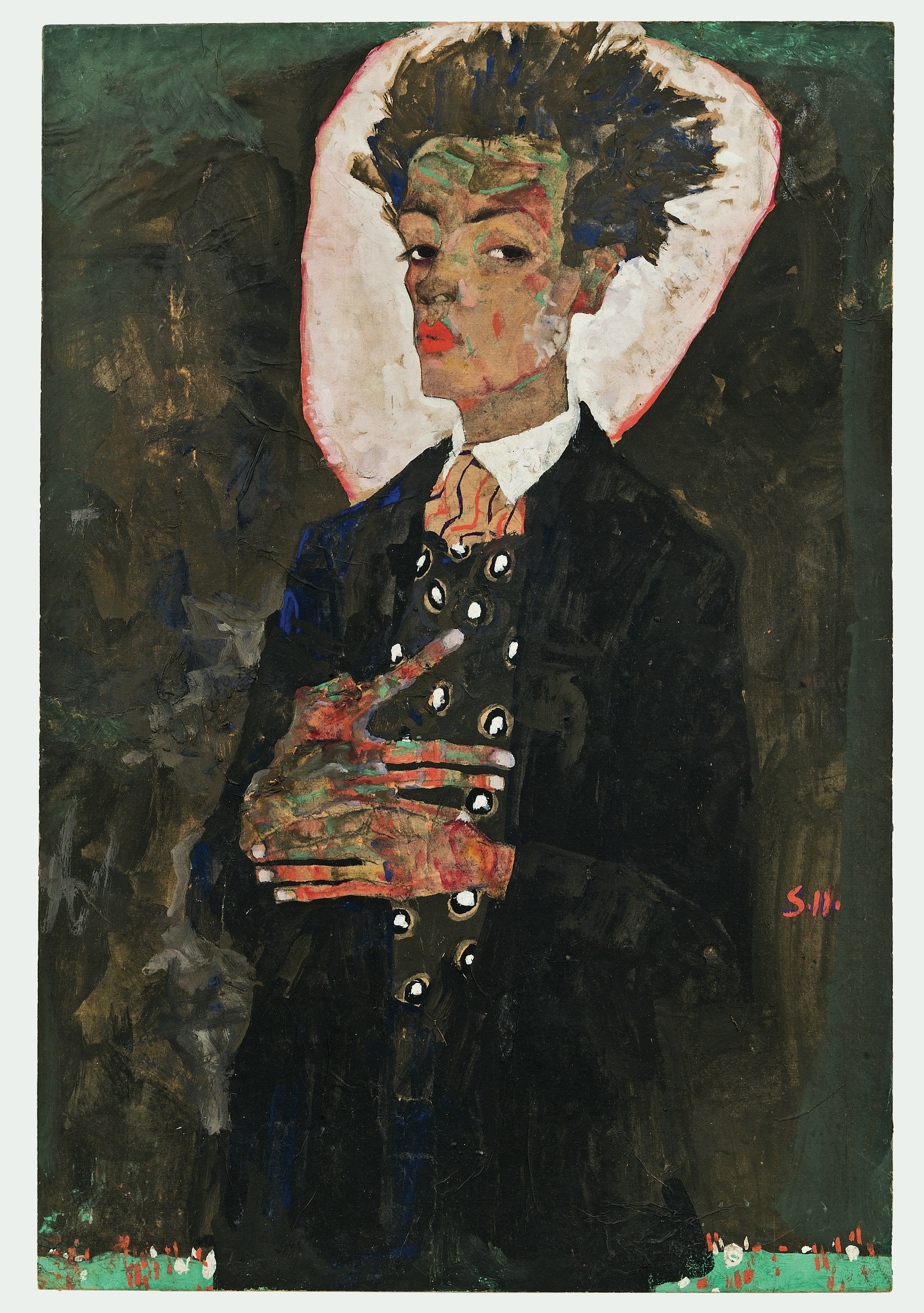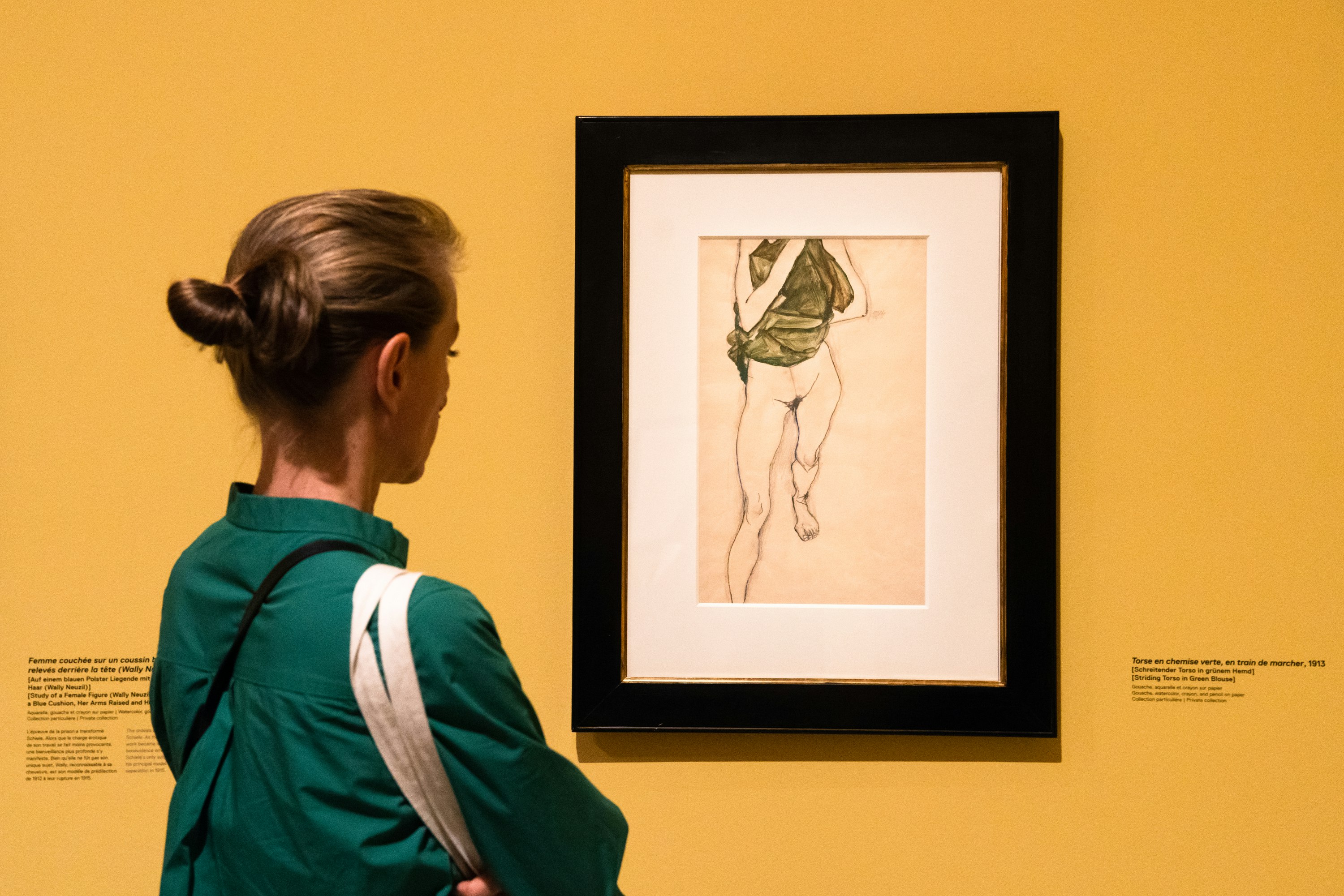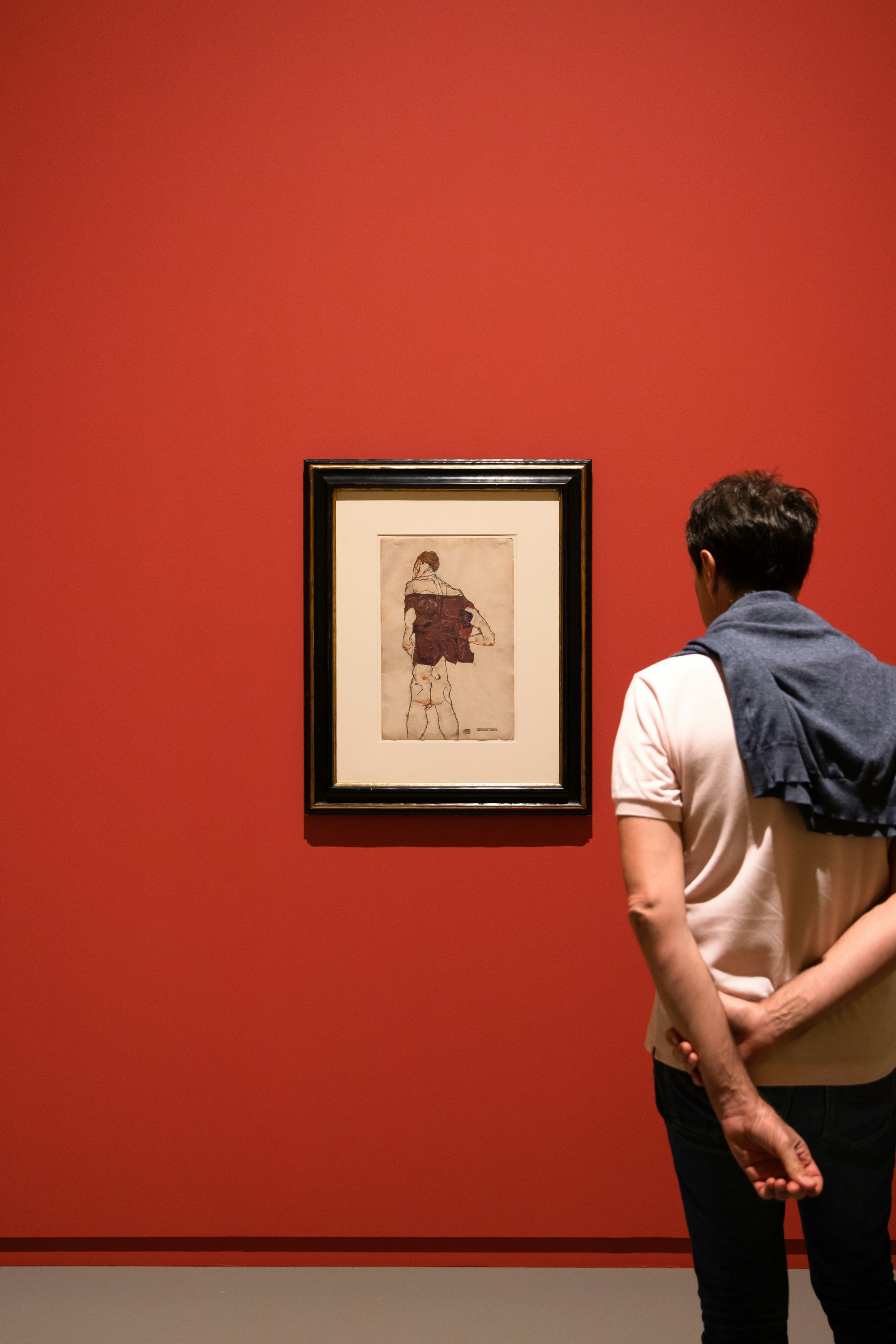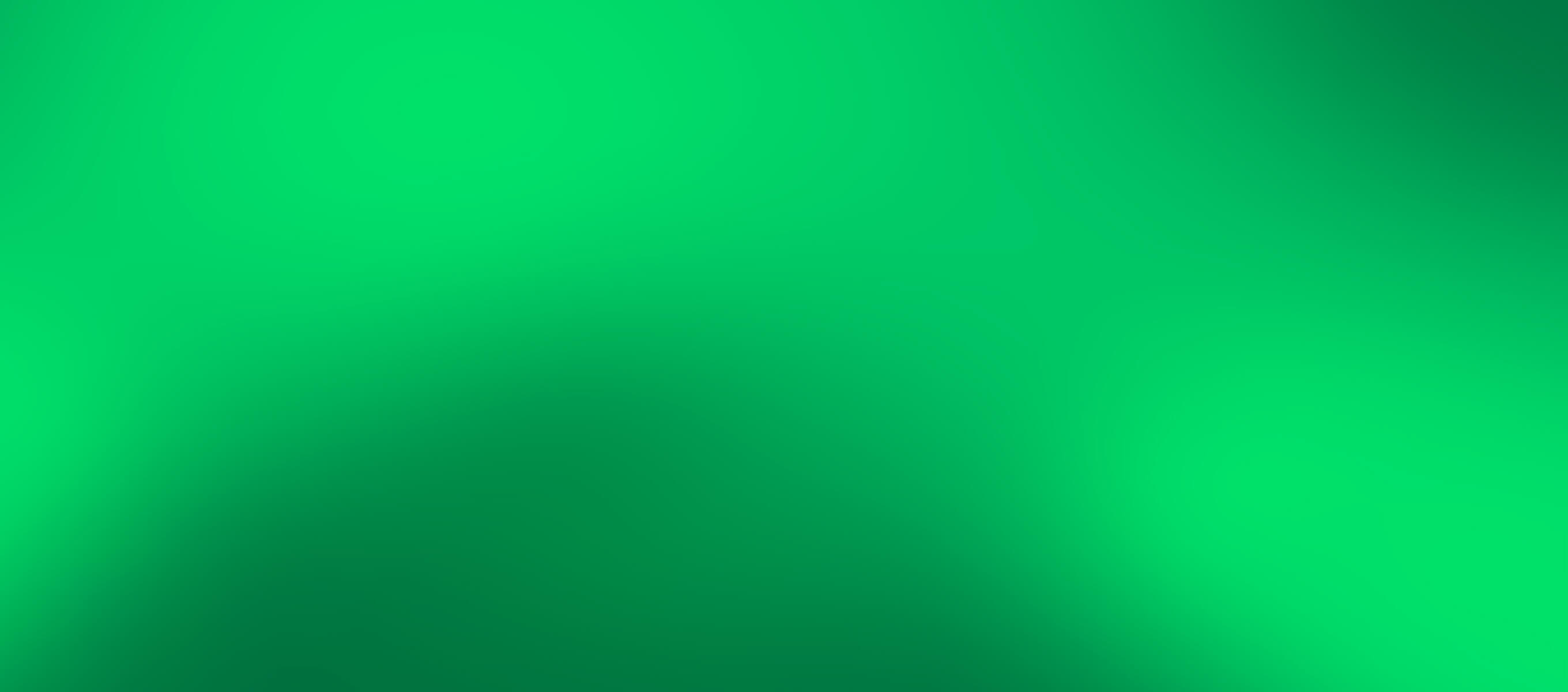Egon Schiele

Egon Schiele, Selbstbildnis mit Pfauenweste, stehend, 1911 © Courtesy of Ernst Ploil, Vienna
Egon Schiele’s work is indissociable from the Viennese spirit of the early 20th century. In just a few years, his drawing emerged as one of the peaks of expressionism.
At odds with the Academy, which he entered precociously, he founded the Neukunstgruppe in 1909 and, thanks to Gustav Klimt, discovered the work of Van Gogh, Munch and Toorop.
From 1911, in relative isolation, he concentrated on his own work, which is fascinating for the distortion of bodies it depicts, the introspection, the frontal expression of desire and the tragic feeling of life. Before he was struck down by Spanish influenza in 1918, the artist had created some three hundred paintings and several thousand drawings over the course of ten years.
As the first monograph of Schiele in Paris for 25 years, the exhibition includes works of the highest order, such as “Self-Portrait with a Chinese Lantern” (1912), on loan from the Leopold Museum (Vienna), “Pregnant Woman and Death” (1911), from the Národní gallery (Czech Republic), “Portrait of the Artist’s Wife Seated, Holding Her Right Leg” (1917) from the Morgan Library & Museum (New York), “Standing Nude with Blue Sheet” (1914) from the Germanisches Nationalmuseum, Nuremberg, “Seated Male Nude” (1910) from the Neue Galerie New York, and “Self-Portrait” (1912) from the National Gallery of Art, Washington.
The exhibition brings together some 100 works - drawings, gouaches, and paintings - over more than 600m2, in the pool-level galleries (Gallery 1). It is organised chronologically across four rooms, following the concept of line and its development in the artist’s work. Dieter Buchhart explains his choice in this way: “Very few artists have approached line and drawing with the same virtuosity and intensity as Schiele. [...] By evolving from the ornamental line towards the expressionist line, combined, in three dimensions, fragmented and amputated, he enabled a borderline dissonant and divergent experience of the line as a sign of human existence.”

Visiteur de l'exposition Egon Schiele à la Fondation Louis Vuitton, Paris
© Fondation Louis Vuitton / Jules Hidrot
The exhibition’s four chapters are entitled:
The Ornamental Line (1908-1909) ; The Existential Line of Expressionism (1910-1911), The Physical Balance of the Combined Line at the Dawn of the First World War (1912-1914), and The Amputated, Fragmented Line during the War Years (1915-1918).
- The Ornamental Line brings together works inspired by the jugendstil, full of fluidity,which makes reference to the discovery of the work of Gustav Klimt, who played a major role in his development.
- The Existential Line of Expressionism is indissociable from the artist’s most expressionist works and his angular and contorted portraits and self-portraits, which are sensual and vibrant, enlivened by touches of pure colour.
- The Physical Balance of the Combined Line at the Dawn of the First World War, from the years before the first global conflict, convey the premonitory fear of war. This group of work is contemporary to, or immediately followed, the artist’s brief period of imprisonment in 1912 in Neulenbach, following accusations of indecency. It is characterised by a less sinuous line and a flatness of drawing which partially frees itself from the former dissonance.
- The Amputated, Fragmented Line during the War Years denotes a significant change: the introduction of formation in the representations of the body. The bodily postures are also more familiar, less aggressive.

© Fondation Louis Vuitton / Jules Hidrot

Egon Schiele, Mutter mit Kind, 1917
Egon Schiele, Mutter mit Kind, 1917
The curators
Curator: Suzanne Pagé
Guest Curator: Dieter Buchhart
Co-curato: Olivier Michelon
Architect : Jean-François Bodin in collaboration with Hélène Roncerel




